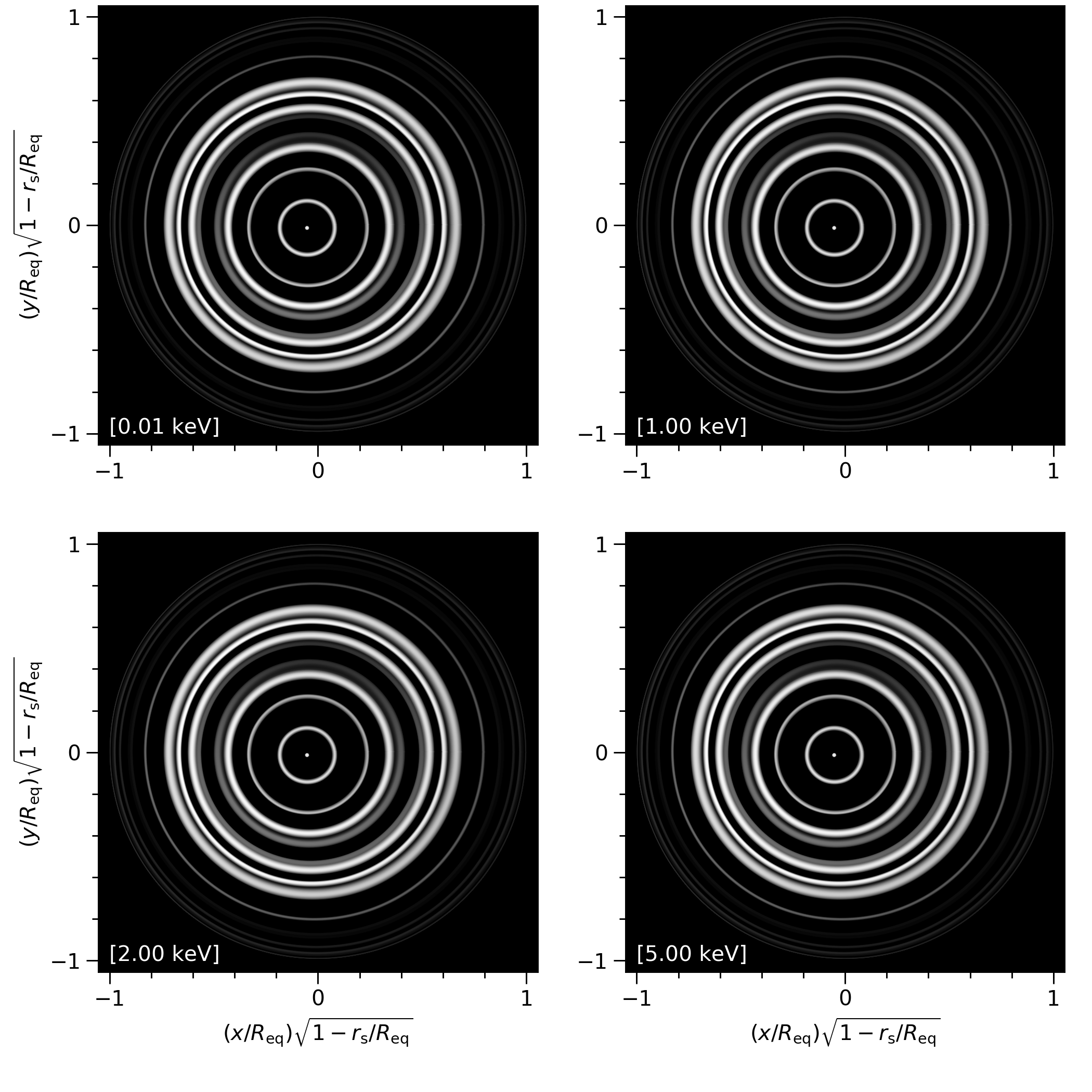FAQs and common problems¶
Installation¶
Do I need to edit the package setup script?
You may well have to edit the setup script depending on the target system. This includes editing compiler flags (see below for example regarding instruction sets).
Does it matter what compiler I use?
The Intel compiler collection has been used successfully for X-PSI and dependencies (namely GSL, MultiNest). We recommend first trying to use Intel in a context where performance matters.
What Intel instruction sets should I use?
If you want to test the binaries on a login node, note that you can
compile with multiple instruction sets for auto-dispatch using the -x and
-ax flags. See the HPC systems page for examples.
What atmosphere extension should I use?
If you want to do some quick calculations and run the Modeling tutorial, you should use the default blackbody atmosphere extension. But if you want to use similar atmosphere models as in the published X-PSI applications so far, you should use to the numerical atmosphere extension when installing X-PSI (see instructions in Installation).
Note that using the model scripts with an unintended atmosphere extension may lead to a segmentation fault error if trying to use numerical atmosphere without providing numerical atmosphere data. Or if using the scripts including the numerical atmosphere data with the blackbody extension, you can get unexpected results, printing though a warning that numerical atmosphere data were preloaded but not used. Examples of numerical atmosphere data, which are required by the numerical atmosphere extension, can be found here: doi:10.5281/zenodo.7094144. Examples of how to use the numerical atmospheres are shown e.g. in Surface radiation field tools -tutorial and in Example script and modules.
Sampling¶
Is I/O or disk storage a concern, or are all the files small?
I/O not a concern for likelihood calculation.
Nested sampling writes to disk at user-specified cadence (so many nested sampling iterations).
Model data such as a four-dimensional atmosphere table can be reasonably large for I/O. We recommend loading, at the outset of the run (or a resumed run), such a table into a contiguous chunk of memory for each of the Python processes running on one node. That table is pointed to for access where needed from compiled modules (C extensions to Python): it is not loaded from disk per likelihood call. We provide an example custom Python class that handles this loading (as used in Riley et al. 2019, hereafter R19).
Disk storage required is indeed small: up to \(\mathcal{O}(100)\) Mbytes for applications thus far (e.g., R19). There is a variant of MultiNest nested sampling that is much more memory and disk intensive, but we do not use it. This is because importance nested sampling is not compatible with the alternative options (read: hacks) for prior implementation (see Riley, PhD thesis).
Common problems and errors¶
How to avoid errors in post-processing?
Do not use X-PSI PostProcessing tools for runs which have not converged yet or have not enough samples. Also, when post-processing, make sure to check the data and output file paths, use cache=True if plotting the signal, and perform a likelihood check to be sure that the imported model is the same as in the run.
AttributeError: ’NestedBackend’ object has no attribute ’:math:`_nc_bcknd`’
Can happen in PostProcessing for runs with use_nestcheck=[False] (e.g. importance sampling). Solution is to turn bootstrap_estimators=False, or alternatively, set use_nestcheck=[True].
Why does my skymap show many annular images like this:
The problem is the xpsi/xpsi/surface_radiation_field/local_variable.pyx file which should be overwritten by xpsi/xpsi/surface_radiation_field/archive/local_variables/PST_U.pyx or xpsi/xpsi/surface_radiation_field/archive/local_variables/two_spots.pyx (depending on the model) and then re-install X-PSI.
ImportError: No module named tools
You are running X-PSI from its main directory (the directory where the setup.py file is). Exit that directory and run it again.
<path/to/run/output>dead-birth.txt not found.
Set use_nestcheck=[False] or check that nestcheck is installed exactly as instructed in Installation (by cloning it from https://github.com/ThomasEdwardRiley/nestcheck.git).
Invalid caching targets.
Set cache=True for the signal.
Each row and column must contain at least one positive number.
There are some rows and/or column in the instrument response that contain only zeros. Solution is to increase the number of channels or decrease the number of energy intervals.
Warning: Using native nestcheck KDE instead of GetDist KDE.
Make sure to to install nestcheck and GetDist packages using the corresponding github repositories as instructed in Installation.
ValueError: There is more than one signal instance.
Typically occurs when post-processing joint NICER and XMM results, if not setting model.likelihood.signals = model.likelihood.signals[0][0] (when plotting the inferred NICER signal).
